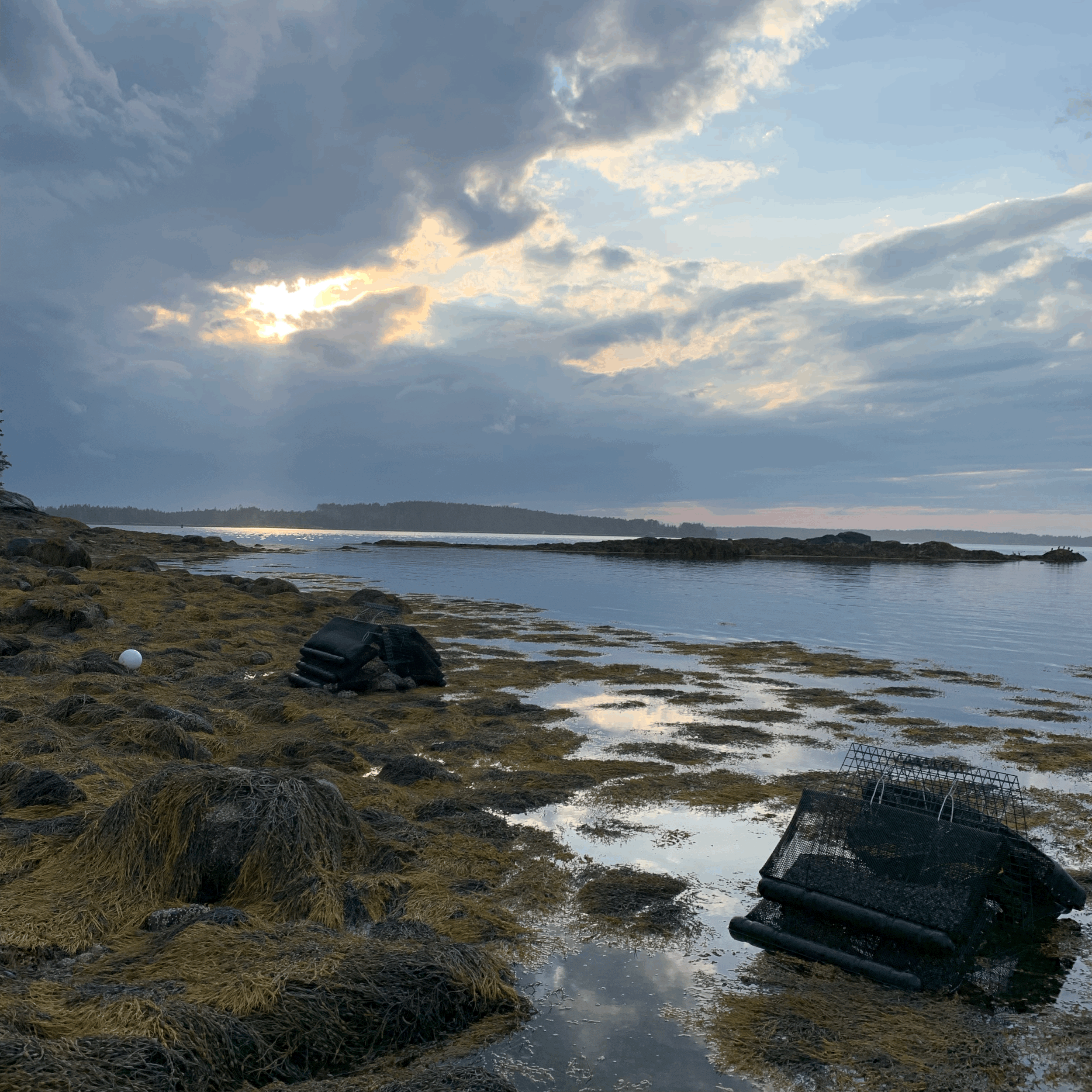Meroir
I suppose if you didn’t get to eat oysters very often you could be immune to the idea of the varying flavors of each farm. Here in Maine, we are all growing the eastern oyster. We are not all growing them in the same location.
It sounds a bit high brow to take the word for how wine grapes develop their particular flavor (soil, sun, rain, wind, etc), “terroir” and transpose it to the oyster, but, mes amis, it’s a fait accompli: “meroir.”
Once upon a time, America produced millions pounds of oysters - their heyday was late 1800s. And then, we made a good mess of our waters and the demand dropped (go figure). But lately, aquaculture, or sea farming, has become not just an upward moving trend, but an urgent idea as we run out of arable lands on which to grow crops.
We’ve been working for the last 6 weeks to bring our oysters up from their winter slumber spot on the ocean floor in the cove. In the fall, we take the floats off either side of each bag and slide the bags into a 10 bag “oyster condo.” The condo then is sent to the ocean floor where it rests for the winter and the oysters are dormant.
Things can go wrong. Gear can get blown around, the mud or silt can smother oysters, but mostly, this is a safe way to keep your crop for these winter months. It’s called overwintering.
This year, we do lose some oysters to smothering (we think the oysters began feeding earlier than usual and the westerly winds kept us from getting everyone up quickly), but we also discovered a nursery of creatures were also using the condos for protection: shrimp, lobsters, sea urchins, hake, cunners and two kinds of crabs. All tiny little versions of their grown selves. It was amazing and the first time we’d seen this on our farm.
Meaning? The oysters we’ve been growing for the last five years have improved the water creating an encouraging environment for other species to return? We don’t really know. Not yet. But, we like to think that if you are going to throw around a word like meroir, it’s good to know that oysters are not only delicious, but contribute to a healthy ecosystem.
If your happy hour half dozen, or two dozen, are an indulgence, consider your treat a service to the health of the ocean. In fact, we would completely understand why you might want to make a few dozen oysters a weekly thing - all in the name of marine conservation.
Perhaps the word meroir will come to refer not only to the flavor profile of your favorite oyster, but also the contribution that oyster makes to its local habit.

